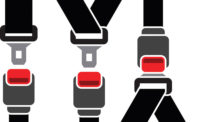The new normal
Many organizations are indeed doing a much smaller volume of business than they were before the bottom fell out of the economy in late 2008. Such organizations usually can’t afford to keep the same size workforce as before. So how do they shrink in a strategic way? How should the work that remains to be done be allocated? How can we ensure that the employees we keep are the right ones, and remain motivated and engaged — even if they must do work outside their previous job description, and in the absence of laid-off coworkers and friends?
Such crucial questions about restructuring simply can’t be answered well with a narrow, internal focus. Tinkering with a given department, laying off x percent of employees in duplicated functions or across the board, or having incumbents reapply and re-qualify for their jobs do not automatically equate to organizational effectiveness.
Any effective approach to restructuring organizations has to be planned “outside-in”. That is, in times of major transition and restructuring, the most fundamental questions about organizational Vision, Mission, and Strategy have to be revisited and addressed first, and any internal reorganization has to be done with full consideration of those big-picture, long-term guiding principles.
Making an impact
Two critical and related concepts impact overall organizational effectiveness.
One is “alignment”. Are the internal systems of the organization aligned with each other? For example, are Sales and Operations linked with a common view of the business, and with common internal strategies for working collaboratively? In more specific terms, does Sales understand Operations, and know what it takes to make the product or provide the service they are selling? Does Operations understand the challenges of Sales, and, ultimately, are we efficiently making products that Sales can sell at high margin?
Is Safety well aligned internally with other critical business functions? Do we efficiently and effectively activate safety awareness and safe behavior at all levels of our organization? How does our work “flow” through our staff, and flow out to and from other parts of our organization? Are we, and are we seen as, an essential business partner promoting safety throughout our organization?
Bottom line — if the organization is to survive and thrive, the various internal systems that contribute to the whole must be working in harmony, in concert with each other, without the internal “push-and-pull” that comes from misalignment.
Do you fit in?
Being internally well-organized is a necessary condition for effective operation. But in and of itself, it is not sufficient. There must also be “fit” with the external environment. The organization is not a mechanical, static thing. Balancing or rebalancing the internal organizational “machine” does not alone equate to effectiveness. Rather than “machine”, organizations are better conceived of as living, animate systems — biological entities that exist within a broader environment. The surrounding environment for business includes, among other elements, customers, competitors, suppliers, regulators, technology, and globalization, and that environment is ever changing, often in sudden and unpredictable ways.
It is important, but not enough, to be internally aligned and internally efficient. The organizations that made Betamax video cassettes (and later VHS video cassettes) may well have been internally well organized. But if they failed to adapt, they are gone. It is essential that organizations “fit” the demands of their changing external environment as well.
Is our safety function not only internally well-structured and aligned — does it “fit” the changing requirements of the environment (regulators, technology, etc.) surrounding our organization?
The down economy, now plodding into its fifth year, has produced a fundamental shift in the environment surrounding business. Virtually everyone is affected. The successful companies that come out of the stall will have reorganized strategically, in ways that are consistent with their Vision. They will have shrunk and reoriented to their markets strategically, not in a “ten percent reduction of every department... hiring freeze for all departments, travel freeze for all employees, pay-freeze for all employees” way. They will have re-thought how they need to be configured in light of actual current conditions, not the long-gone “good old days”.
That is just what the most savvy companies I work with are doing now, in earnest.



